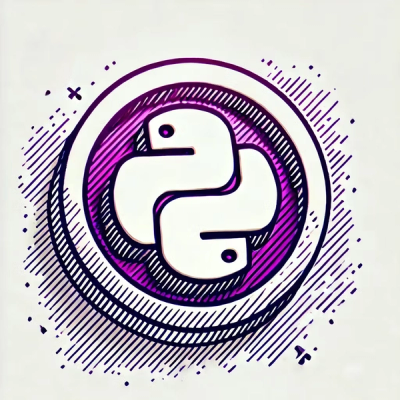
Product
Socket Now Supports pylock.toml Files
Socket now supports pylock.toml, enabling secure, reproducible Python builds with advanced scanning and full alignment with PEP 751's new standard.
A simple library to making working with regions of an image (OCR, CV, etc) easier to work with
boxobj is a simple library that makes working with computer vision, OCR, and other tools that interact with regions
of an image or document, simpler and more predictable.
The core class in this library is Box. It handles many of the common approaches that different
libraries use to reference the region containing the returned results including:
[x1, y1, x2, y2]top, left, width, height[0.2, 0.5, 0.3, 0.8]In addition, it supports conversion from bottom indexed boxes like those used in older file types and libraries such as PDFs.
Box internally represents its coordinates in pixels that are measured from the top-left, but it can return results using other approaches as needed.
from boxobj import Box
tlwh = { 'top': 10, 'left': 10, 'width': 30, 'height': 30 }
coords = [10, 10, 40, 40]
coords_ratio = [0.1, 0.1, 0.4, 0.4]
obj = {
'coordinates': [10, 10, 40, 40],
'label': 'green',
'name': 'my box'
}
box = Box.from_position(tlwh)
box = Box.from_coords(coords)
box = Box.from_position_percentage(coords_ratio, width=100, height=100)
box = Box.from_position_percentage(coords_ratio, top_origin=False, size=(100,100))
box = Box.from_dict(obj)
The Box object supports a range of pythonic interactions including sort, addition, subtraction, multiplication, division and area calculations.
from boxobj import Box
box_a = Box([10, 10, 40, 40])
box_b = Box([15, 10, 30, 50])
boxes = [box_b, box_a]
# sort the boxes vertically
boxes.sort()
# sort the boxes horizontally
boxes.sort(key=lambda x: x.left)
# shift the position of a box
box_a_shifted_down = box_a + [0, 10] # [10, 20, 40, 50]
box_a_shifted_left = box_a - [5, 0] # [5, 10, 35, 40]
# scale up the size of a box
box_a_bigger = box_a * 2 # [20, 20, 80, 80]
box_a_smaller = box_a / 3 # [3.333333, 3.333333, 13.333333, 13.333333]
box_a_smaller = round(box_a_smaller) # [3.3, 3.3, 13.3, 13.3]
box_a_smaller_floor = box_a // 3 # [3, 3, 13, 13]
# Combine two boxes (union)
box_c = box_a + box_b # [10, 10, 40, 50]
# Get the intersection of two boxes
box_i = box_a & box_b # [15, 10, 30, 40]
# Get the area of a box
box_a_area = abs(box_a) # 900
box_b_area = box_a.area # 600
Note that to avoid the excessive precision that frequently makes its way into Boxes as they are moved and scaled, the repr of a Box object limits the output to six digits after the decimal.
Of course, these operands can be combined to perform common operations such as the common intersection over union calculation used to evaluate agreement between two models.
iou = abs(box_a & box_b) / abs(box_a + box_b) # 0.375
The Box object also supports assigning attributes such as a label or text to the object to associate it with
a set of values.
from boxobj import Box
cv_box = Box([10, 10, 30, 50], {"label": "cat", "confidence": 0.84})
cv_box_2 = Box({"coordinates": [10, 10, 30, 50], "label": "cat", "confidence": 0.84})
ocr_box = Box([3, 4, 67, 10], text="Boxo is great for working with boxes")
As you can see, there are a variety of options for creating a Box object from whatever source system produced it.
Here the cv_box value is created by passing the coordinates first, then a dict containing the associated attributes.
cv_box_2 is the same value, but here the coordinates and attributes are contained in a single dict object. Finally,
the ocr_box is created by passing coordinates and using keyword arguments to assign attributes. This flexibility is
intentional to make it easier to handle the varying approaches different tools use to represent data.
Internally the boxobj classes keep the attributes and coordinate values separate to make them easier to work with.
This shows up in how the objects are represented when printed or displayed in the output. The following is the
representation of the objects above.
Box([10, 10, 30, 50], {'label': 'cat', 'confidence': 0.84})
Box([10, 10, 30, 50], {'label': 'cat', 'confidence': 0.84})
Box([3, 4, 67, 10], {'text': 'Boxo is great for working with boxes'})
data and serialization
page pages page indices
FAQs
A simple library to making working with regions of an image (OCR, CV, etc) easier to work with
We found that boxobj demonstrated a healthy version release cadence and project activity because the last version was released less than a year ago. It has 1 open source maintainer collaborating on the project.
Did you know?

Socket for GitHub automatically highlights issues in each pull request and monitors the health of all your open source dependencies. Discover the contents of your packages and block harmful activity before you install or update your dependencies.

Product
Socket now supports pylock.toml, enabling secure, reproducible Python builds with advanced scanning and full alignment with PEP 751's new standard.

Security News
Research
Socket uncovered two npm packages that register hidden HTTP endpoints to delete all files on command.

Research
Security News
Malicious Ruby gems typosquat Fastlane plugins to steal Telegram bot tokens, messages, and files, exploiting demand after Vietnam’s Telegram ban.